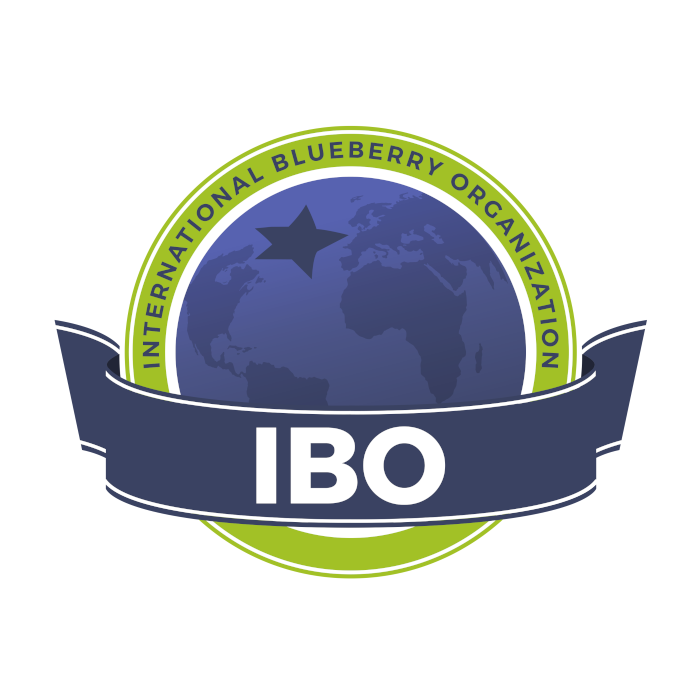Why pollination is key to effective Blueberry production
- . August 2025
Pollination plays a decisive role in blueberry production, influencing not only fruit set but also size, firmness, flavor, and overall market value, but at too often it is viewed as as a secondary or logistical step. Beeflow, an Argentina-founded biotechnology company, has developed science-based strategies to transform pollination into a measurable and optimizable stage of crop management. Their approach combines bee nutrition, behavioral training, and precision monitoring technologies to improve pollination efficiency, even under challenging conditions.
In this exclusive interview for the IBO, Matías Viel, CEO of Beeflow, shares the scientific principles behind the company’s work, real-world results from blueberry orchards across the Americas, and his perspective on the evolving role of pollination in modern fruit production.
Why is pollination a critical stage of blueberry cultivation and what influence does it have beyond simple fruit setting?
Pollination is one of the most undervalued elements of blueberry production, but one which has the biggest impact on profitability. More than just affecting the fruit set, pollination directly influences sizing, firmness, uniformity, and the internal development of the fruit. At Beeflow, we view pollination as being a key crop management tool. When flowers receive sufficient and timely pollination, the plant is able to better distribute its resources, which translates to fruits with a greater commercial value. It’s not just a question of quantity, but also of the quality and consistency of production.
What fruit characteristics can be improved as a result of more efficient pollination?
The standout characteristics are:
- Sizing: larger fruits with better fertilization.
- Uniformity: Better pollination during flowering leads to more even fruit sizing.
- Firmness: a key post-harvest factor – improved pollination stimulates the complete development of the fruit.
- Seed development: Good pollination stimulates embryonic development, which is vital for fruit growth.
- Flavor: Although many factors come into play, full pollination can improve sugar-acidity distribution, leading to a better organoleptic balance.
What differences have you seen between orchards using optimized pollination with those using conventional techniques?
We have catalogued consistent improvements of between 10%-40% in productivity and quality in orchards that have adopted our approach. In Peru, for example, we achieved a 20% improvement in blueberry orchards with longer flowering lasting up to six months. This represented a big challenge for bee health and, as a result, effective pollination.
In Oregon in the U.S., we recorded 32% improvements in fruit yield and firmness. In challenging areas like Osorno in Chile, we achieved a 40% increase in production compared with the average for the two previous years with a client who is now scaling-up globally with our support. We have also seen a decrease in the number of bee hives needed per hectare, thanks to having better trained and more active bees.
From an agronomic point of view, what are the most common errors made when overseeing blueberry pollination?
The most common error is treating pollination like a passive or logistical stage. Bee hives are put in place without taking into account factors like climate, phenological status, flower health or the behavior of the pollinators. It’s also common to overuse bee hives without evaluating their actual efficiency, which increases costs without guaranteeing improved results. Often, there’s a lack of awareness about how certain pesticides can affect the health and behavior of bees during the most critical moments of cultivation. Moreover, they don’t take into account the fact that each blueberry variety needs a specific pollination strategy, adapted to their floral characteristics and the flowering window.
How does the nutrition and training affect their efficiency in pollinating this particular crop?
At Beeflow, we have developed a patented nutrition and training system for bees that improves their health and foraging behavior. As an example, we trained bees to prefer blueberries to other nearby floral sources, which significantly increased their visit rates to target flowers. This has been especially useful with less attractive varieties and unfavorable weather conditions. Moreover, our bees maintain high productivity levels even at low temperatures, which has extended the pollination window.
Are there quantifiable indicators or models that allow us to define the impact of pollination on fruit quality?
Yes, we work with models that allow us collate data covering floral visits, temperatures, floral vigor, and fruit development in order to correlate the efficiency of pollination on quality parameters such as sizing, firmness, and seed content. Moreover, we use analytical data platforms to cross-reference these indicators with yield per plot, allowing decisions to be made based on evidence rather than guesswork.
What technological innovations are being currently applied to monitor or improve pollination in real time?
Currently, we use field sensors, portable weather stations, and predictive models which combine climate, flowering and pollination activity. We are also advancing with computerized vision and AI algorithms to measure floral visits by pollinator species. These combinations allows us to make interventions in a timely manner, whether that be adjusting bee training or modifying bee hive management.
What challenges do blueberries face in terms of attracting pollinators and how can we work to overcome them?
Blueberries present a number of challenges: some varieties have closed flowers that offer little attraction in either nectar or pollen, plus the flowering window can coincide with competing flora in the surrounding area. For this reason, it’s vital to work on attracting pollinators through training, the strategic locating of bee hives, management of the environment, and the selection of complementary pollinating varieties.
How do you view the future of pollination management for intensive crops like blueberries?
The future is in the total integration of precision agriculture. Pollination will cease to be a ‘black box’ and instead will become another variable in strategic agronomic management. We will see more use of sensors, AI, bio-stimulation, and technical services. Beeflow aims to become a platform for natural agro solutions where pollination is only the starting point.
What message would you give to producers who still undervalue pollination as part of strategic crop management?
Ignoring pollination is like building a house without foundations. Investing in genetics, irrigation, and nutrition without any guarantee of sufficient fertilization limits the potential of the crop from the start. Pollination is an investment, not an expense. And in a market which is ever more demanding in terms of quality and traceability, those who can master this stage will have a clear competitive advantage.
08-08-2025
This is an IBO Exclusive






